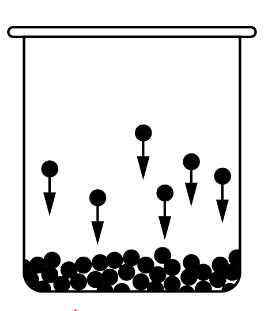
Journal Entry:

A 2.00 mole sample of C2H5OH undergoes the phase transition illustrated in the diagram above. The molar enthalpy of vaporization, ΔHvap of C2H5OH is +38.6 kJ/mol. Which of the following best identifies the change in enthalpy in the phase transition shown in the diagram?
A) +19.3 kJ B) +77.2 kJ C) -19.3 kJ D) -77.2 kJ E) +38.6 kJ
Learning Intentions
We will learn how to analyze and calculate enthalpy of phase changes.
We will learn how bond enthalpies can be used to calculate enthalpy of a reaction.
Closing Task:
You can calculate enthalpy of phase changes
You can calculate enthalpy of reaction using bond enthalpies.
Content Standards being covered:
Chemical system undergo three main processes that change their energy: heating/cooling, phase transitions, and chemical reactions. (E.K. 5.B.3.)
At the particulate scale, chemical processes can be distinguished from physical processes because chemical bonds can be distinguished from intermolecular interactions. (E.K. 5.D.2)
The net energy change during a reaction is the sum of the energy required to break bonds in the reactant molecules and the energy release in forming the bonds of the product molecules. The net change in energy may be positive for endothermic reactions where energy is required, or negative for exothermic reactions where energy is released. (E.K. 5.C.2)